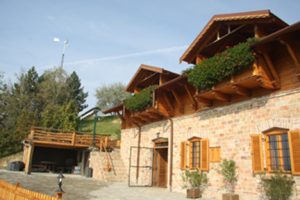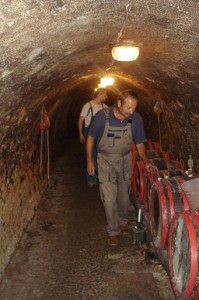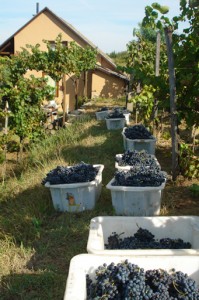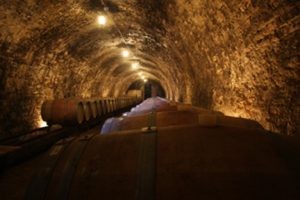Chris Dennis recently went on a wine pilgrimage to Hungary. Here he reports back on a little known but up and coming wine producing region.
We work in an industry with few preconceptions. Not only do bartenders naturally become excited at the mention or taste of new products but we actively seek them out, or at least we do so when there isn’t an army of reps brandishing them at us like weapons across the bar.
Many of the products we come across today have exciting and unusual concepts behind them, among them cold filtration, re-distillation, organic soy-free soil and celebrity names etc. The industry is constantly changing and redefining itself, evolving in order to adapt to different consumer and non-consumer led trends.
There are certainly pioneers behind these new shifts and products, and, of course, there is passion. But what about certain aspects of drinks production where generation after generation have created something unique not out of supply and demand, but simply because it is ‘what they do’ and what they have always done?
From small-batch artisanal Mezcal producers in Oaxaxa to families in their tenth generation of production in Rioja, sometimes love and passion for the production of a particular drink comes simply from tradition, community and centuries of knowledge. I was humbled – a word I do not use lightly – on a recent trip to Southern Hungary. It started with a piece I wanted to write about lesser known Old World wines but it quickly became so much more.
An Introduction to Hungary
Hungary is home to such beautiful places such as the fabled Budapest, Balaton Lake and Tihany and is far enough from the equator to create a near perfect grape-growing zone. It has always been synonymous with two of its most famous wine styles: Bull’s Blood and Tokaji, both of which are produced mainly in the north of the country. However, the country has over 22 growing zones, which are spread as evenly across the country as butter on bread and has a hugely diverse range of wines to offer.
After arriving in Budapest, we hit the road and drove south to our destination: Bonyhad. This would become my base for visiting the revered Szekszard wine festival during my three-day visit. My companions were the Tengelics family and my trip would have been impossible without them. I first met Tamas Tengelics in London and while interviewing him on the subject of Hungarian wine it quickly became clear that if I wanted to understand it, I would need to see the Harvest festival at first hand and visit the cellars.
Southern Hungary, from the Balaton Lake down to Szekszard, is speckled with small sleepy towns, which slowly give way to each other, separated only by long stretches of rolling fields and sloping hills. It is quite simply beautiful, unspoiled in a way that is becoming harder and harder to come across.
This part of the country is not unique in the sense that it is emphatically agricultural. There is a long history of growing here, everything from peppers (or ‘paprika’) to tomatoes, hazelnuts and, of course, grapes. This tradition of farming and agriculture has been around since before the Turkish and the Russians came and left and is truly inspirational.
I spent my first night with Tamas and the third comrade in our party, Gabor Kiszler, drinking wine matured in the cellars of their respective families, eating hot peppers grown in the garden, bread made next door and smoked sausage made by the Tengelics’s grandfather. Even the tomatoes on the table had been grown just outside, and Gabor was quick to point out: “They’re not the like the ones in supermarkets, you can actually taste them”. There was nothing in sight that hadn’t been created from harvesting the fruit of the land.
It is necessary to understand that love, passion and knowledge before you can consider the wine itself. A third-generation craftsman, let’s say an architect, will be highly sought after and paid a premium to design and construct a building of grandeur and elegance. Wine making is no different.
Here, generation after generation have learned and fine-tuned their craft, not necessarily because they want to take on the global market place and export millions of litres of wine, but more purposefully because not only do they want to drink good wine, but also have respect for the entire process.
Tamas tells me: “My father always told me that I could go wherever I wanted in the world… as long as I was home for harvest”. It is true that many of the winemakers I spoke with had recently started exporting more and more to Eastern markets, particularly China, as well as to Scandinavian countries and Germany. Slowly but surely, certain markets are realising the potential of this wine category.
Between the Tengelics and the Kiszler Family I was given an insight into two perfect examples of production. I had the honour of being a guest at the Tengelics family house for the duration of my stay in Bonyhad. Zoltan Tengelics has been producing wine his whole life and it was with him and his family that I woke up early on Saturday morning, donned a pair of green overalls and hit the family plot.
In the Vineyards
Rows and rows of grapes lined a slowly curving hill, upon which many, many more plots glinted on the horizon. Zoltan grows several grapes here along with peppers and much more. That morning we were picking kekfrankos (Blaufrankisch). They dangled from the vine looking more like blueberries than grapes, sparkling from time to time in the sun.
Kekfrankos are a typical Hungarian grape and almost all of the wine producers I spoke to on my trip produced a kekfrankos expression of some type and by the time I arrived back at Luton, kekfrankos and I had become good friends. Szekszard produces some of the finest Kekfrankos in the country.
It has a strong taste, not a million miles away from a sangiovese, it has a complex bouquet, with cherries, fig and smoked meat coming through. After a good morning’s harvest we ate a kind of chicken goulash served on a table adorned with spring onions pulled straight from the ground and handmade bread surrounded by the now naked vines. All this was washed down with the family’s 2011 rosé served as spritzers which we drank in true rustic style from red plastic mugs.
Zoltan had already harvested the olaszrizling, which grew parallel to the vines we had worked on that morning. Olaszrizling is one of the most common white grapes in Hungary; it has a subtle balance of sweet and sharp flavours and a nose which is reminiscent of freshly cut grass. Only the Cabernet Sauvignon remained, as it was decided that it needed slightly longer to ripen to perfection.
Down in the Cellars
We then hooked up a trailer to Zoltan’s Volvo, filled it with our 18 crates of grapes, left the plot and headed to the family’s cellar. There were narrow strips of large, ornate sheds lining the streets of a town five minutes’ drive away. These were the cellars, or ‘Pince’, as they are called in Hungarian.
The buildings were so exceptionally old that they seemed to have taken root and begun to breath. Each was similar in construction yet had been built and re-built over time. Essentially, each consisted of one large room, with a spire-like triangular roof.
The key for the cellar was a foot long and forged in gnarled and battered metal. Here we weighed our harvest (just over 600kg) and began the process of removing the grapes from the stalks then leaving the grapes to rest in a wooden vat, which only had one or two small leaks. With this process underway, Zoltan and Tamas were able to open up the trap door under our feet and lead me down into the barrel room.
Tamas, carrying a candle, went down first into the 30-foot long subterranean passage. It is so insulated that we needed to make sure it wasn’t too saturated with carbon dioxide. Luckily the flame continued to burn until we reached the end of the tunnel. And there I was, surrounded by aging wines of all types in dusty barrels skirting the flaking stone walls that had been there for over a century; it was wine Nirvana.
Zoltan was keen for me to try several blends he had on the go and I jumped at the chance, sampling each one straight from a rudimentary valinch. The olaszrizling and chardonnay cuvee from the 2011 harvest was delicious and I plan to return to acquire some once they are bottled.
The Kiszler Family
The Kiszler family makes up the next chapter of this story. Ferenc Kiszler has a background in accountancy and has helped with the family harvest as long as he can remember. In 1997 he helped to create ‘Vitis Wines’, taking his knowledge of business and wine production and adapting it on a larger scale.
The Vitis Cellar is still young and is a beautiful building on top of a hillside from which the entire town can be seen. It lacks some of the mustiness and history-enriched air which I encountered in some of the older cellars I visited, but this wine is for trade and needs to follow Hungary’s demanding wine regulations.
I was fortunate enough to try the Vitis 2009 Cabernet Sauvignon at the cellar. It possesses long, bold blackcurrant and cedar flavours with that classic Cabernet Sauvignon ability to gather the flavours around the sides of the mouth. Vitis wine is a perfect example of the future of the industry here – created from expert craftsmanship, passion and tradition and housed in a contemporary versatile ‘Pince’.
Ferenc and Gabor took me on a drive around one of their almost completely harvested plots. It was 50 acres and would have taken much longer then a morning to pick dry. It was, of course, wonderful. It was clear that time and commitment had been poured into its construction and its yield, I’m sure, reflected this.
Feri (Ferenc`s nickname) also had a machine, which produced an artificial shotgun blast to scare away any birds, which attempted to feast on his sapling grapes. I was then privileged enough to be taken on a tour of the state of the art wine production facility where Feri works.
Various wines are produced there and the more commonly seen ‘Karolyi’ brand. From atop the hill where the cellar is nestled, it is clear that both Feri and Vitis have a unique and exciting view of the countryside and the current Hungarian wine market.
Szekszard Harvest Festival
The main event was the Szekszard Harvest festival. I spent two nights there speaking with winemakers from across the region and beyond. The venue is sandwiched between two bastions of European incarceration, a prison and a church, built from glorious old granite.
More than 30 wine makers set up a long strip of large halls complete with wooden furnished bar tops and seating areas. The festival had two stages, with bands playing everything from more traditional folk music to Edda, one of Hungary’s most famous “old school” rock bands. Various merchants had stalls amidst the buzz of the event selling memorabilia in all its guises.
Then there were the food stalls. If you’ve been bitten by the street food bug you might be tempted to overlook the wine and simply enjoy the array of homemade portable goodness. There were clay ovens, oak benches, roast dough of all shapes and a scent of rosemary and goose crackling, which lingered in the air all through the night.
It was without a doubt the most friendly, laid-back and fun wine event I have ever been to. I dropped in and tried wine from too many producers to count: the Takler estates, Eszterbauer Boraszat, Vitis of course, Ferenczi Szolobirtok, Daniel Pince, Baron Von Twickel and so many more. Gabor and Tamas played the role of interpreter and each producer was excited to speak about their wines, production method and distribution.
I think we are all familiar with the feeling when, as bartenders, we have a passion for a specific drink or spirit and know that when we start to talk about it, we do so with a natural energy that comes simply from pleasure and a desire to share. All of the revered winemakers I spoke to shared this feeling when they spoke about Hungarian wine – their wine.
It was clearly in their blood. One question I asked as many producers as possible was what they thought of the next generation carrying on their passion and agricultural tradition and translating that into wine production. The fact is that many members of the older generation I spoke to put their arm around the young man or woman next to them at their wine tent and said: ‘This is my son (or daughter) and they are standing next to me today and will be there tomorrow.’
Other than Kekfrankos, the Kadarka grape (Tomas’s favouite) is another which is grown to a consistently high quality in Southern Hungary. Because of the warmer climate in Szekszard, Kadarka is able to ripen whilst maintaining its acidity, creating a spicy, lingering finish. Again, we made friends quickly. The ‘Takler’ Kadarka-based cuvée was particularly noteworthy, rather unique in its balance of light, spicy flavours which gave way to a powerful and long finish.
God Bless The Hungarians
Finally there was the man who personified everything I had learnt about Hungarian wine: Pal Meszaros. Mr Meszaros had just been awarded the prize for Cellar of the Year. It’s hard to describe him without remembering the street festival that was moving quickly and loudly around us.
He is a calm man and the array of sounds around did nothing to disturb his relaxed, satisfied demeanour. He spoke quietly and eloquently, explaining to me that he had always been part of the wine culture there and that it was a pleasure to know that people enjoyed his wine as much as he did. Passionate about his soil, grapes and family, he is the most humble of humble men and my words do not do him justice.
Go to his cellar, taste his wines, meet him and only then will you know. I tasted his whole range with Gabor and later with Tamas, a fantastic catalogue with two wines standing out for their ingenuity and unique taste. The first had been harvested less than a month before we drank it: a crisp Irsai Oliver – a Hungarian white grape, long lingering green notes with a relaxed sweetness giving way to a perfectly balanced tart finish.
And finally, the most unique wine of my time in Hunagry: ‘St Gral’, created from a clipping of a pre- phylloxera Kardarka vine. I have never tasted a wine like it, smooth and haunting, flavours as diverse as raspberries and smoky bacon beautifully married.
The first line of the Hungarian national anthem translates as ‘God Bless The Hungarians’. Well, God bless them indeed. God bless them, their superlative agricultural talents and, of course, their wine.

